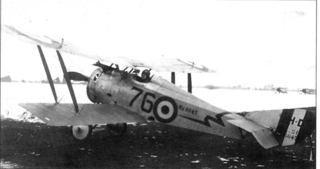Related Research Articles
Sottotenente Michele Allasia was a World War I fighter ace credited with five aerial victories.
Sottotenente de Vascello Umberto Calvello was a World War I fighter ace credited with five victories.
Capitano Giulio Lega was a World War I flying ace credited with five aerial victories. After finishing the war, he completed medical school, and began a near lifelong career caring for the Italian Chamber of Deputies.
Tenente ColonnelloGiorgio Michetti was a World War I flying ace credited with five aerial victories.
Tenente Giovanni Sabelli was an Italian World War I flying ace credited with five aerial victories. At the start of World War I, he was already an experienced combat pilot.

Tenente ColonnelloAlessandro Buzio was an Italian World War I flying ace credited with six aerial victories, four of them shared.
Sergente MaggioreAntonio Chiri was a World War I flying ace credited with six confirmed and seven unconfirmed aerial victories.
Sergente MaggioreGuglielmo Fornagiari was a World War I flying ace credited with six aerial victories.
Sergente Cesare Magistrini began his lengthy aviation career as a World War I flying ace credited with six confirmed and four unconfirmed aerial victories.
MarescialloGuido Nardini was a World War I flying ace credited with six aerial victories.
Tenente Luigi Olivi was an Italian World War I flying ace credited with six aerial victories. He won two awards of the Silver Medal for Military Valor and was killed in action.
TenenteLeopoldo Eleuteri was a World War I flying ace credited with seven aerial victories.

TenenteMario Fucini was a World War I flying ace who claimed credit for 13 aerial victories during the war; seven of these were confirmed in 1919.

Tenente di VascelloOrazio Pierozzi (1884–1919) was a World War I flying ace credited with seven aerial victories.
Tenente Gastone Novelli was a World War I flying ace credited with eight aerial victories.
SergenteGiovanni Nicelli was an Italian World War I flying ace. He was credited with eight or nine confirmed aerial victories, and died in service to his nation on 5 May 1918.

LieutenantGiovanni 'Giannino' Ancillotto was an Italian World War I flying ace credited with 11 confirmed aerial victories. Rather unusually, he served solely with aviation while he was in the military, beginning in the lowest rank. Among his aerial victories as a fighter pilot were three over enemy observation balloons right after the Battle of Caporetto. As an example of the hazards of balloon busting, on 5 December 1917 Ancillotto returned to base with singed swatches of the third balloon's fabric adhering to his damaged fighter plane.
CapitanoErnesto Cabruna (1889–1960) was a professional soldier who became a World War I flying ace credited with eight aerial victories. He served in Italy's military police, beginning in 1907. After service in Libya and Rhodes, he received a Bronze Medal for Military Valor a year after Italy's involvement in World War I began. He turned to aviation, became a pilot, and as such earned his first Silver Medal for Military Valor at the end of 1917.

76a Squadriglia of the Corpo Aeronautico Militare was one of Italy's original fighter squadrons, being founded during World War I on 25 May 1916. On 30 May 1916, the new unit began its combat career. Between 22 April and 3 October 1917, three of its commanding officers became casualties. It was drawn into the air fighting over Caporetto in late 1917, and forced to retreat three times during November as a consequence of the Italian defeat.

81a Squadriglia was an Italian fighter squadron raised in March 1917 that served through the end of World War I. One of its aces, Flavio Baracchini, would become the first awardee of the Gold Medal for Military Valor. The squadron would be credited with 34 aerial victories, and suffer four dead. It ended the war with 28 aircraft on strength.
References
- Franks, Norman; Guest, Russell; Alegi, Gregory. Above the War Fronts: The British Two-seater Bomber Pilot and Observer Aces, the British Two-seater Fighter Observer Aces, and the Belgian, Italian, Austro-Hungarian and Russian Fighter Aces, 1914–1918: Volume 4 of Fighting Airmen of WWI Series: Volume 4 of Air Aces of WWI. Grub Street, 1997. ISBN 1-898697-56-6, ISBN 978-1-898697-56-5.